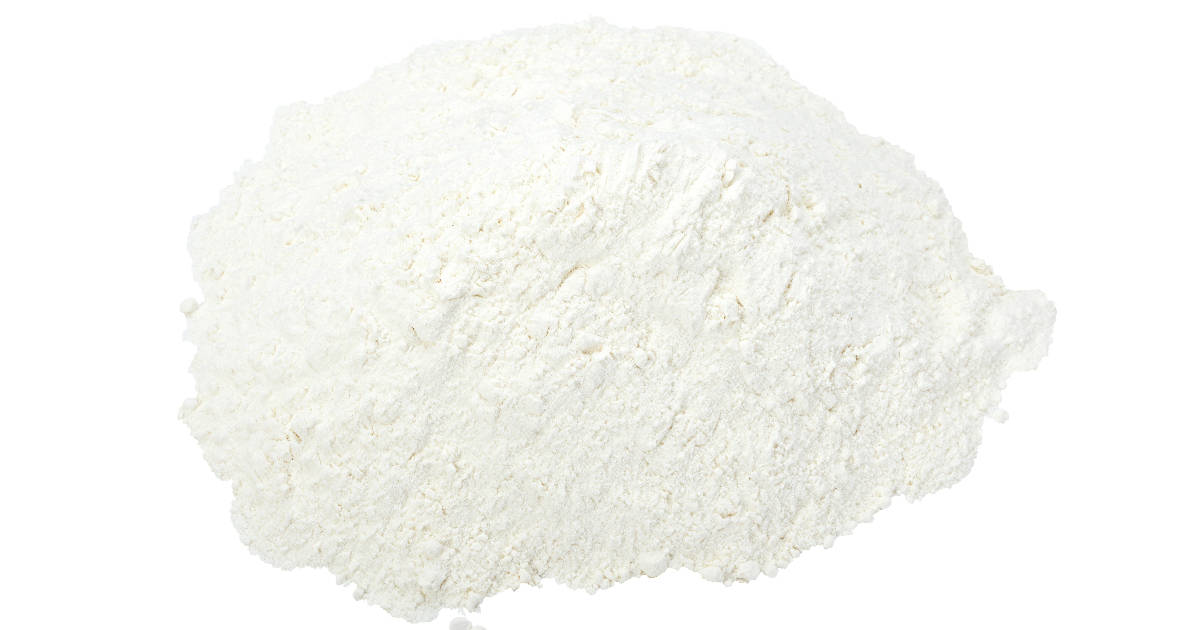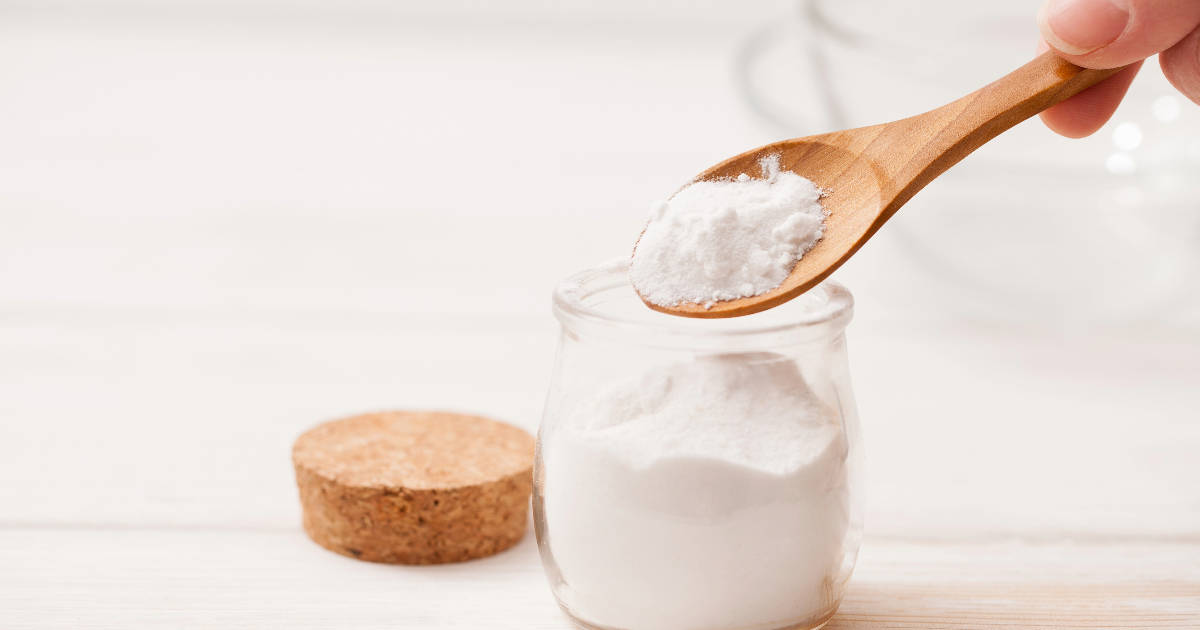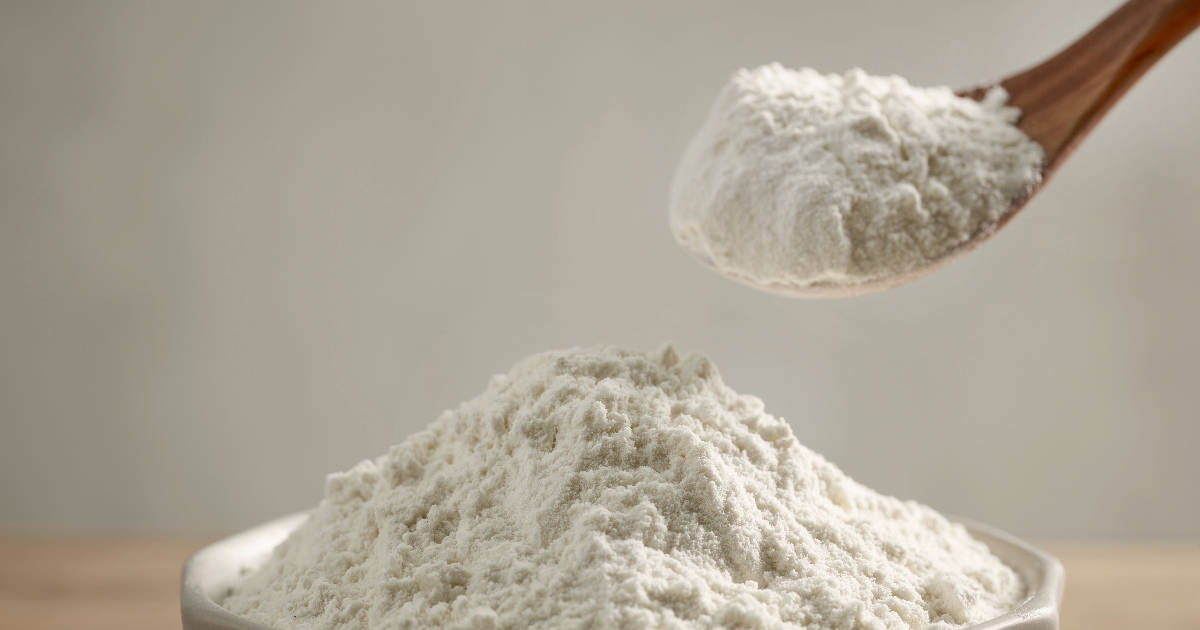Baking is considered one of the most scientific forms of cooking. Wrong measurements, utensils, and temperature control can easily ruin your baked goods. Too little baking flour and you'll end up with a thin, watery batter. Too much baking powder and your baked treats will rise excessively.

Knowing how to properly use ingredients is key to avoiding mistakes in the kitchen. While some ingredients may look deceivingly similar, they cannot be simply substituted for one another. Swapping one ingredient for something completely different will drastically impact the flavor, texture, and aroma of your baked treats.
Some think that baking flour is just a "form of baking powder when it comes to powdered ingredients." It's true that flour comes in a powdered form and is a common ingredient in baking. However, you absolutely cannot use baking powder and flour interchangeably. Baking powder is a leavening agent while baking flour provides structure and protein.
To better understand the key differences, you need to look at the chemistry behind common baking ingredients. Leavening agents like baking powder are used in powdered form so they can be easily incorporated into the batter. They are added in small amounts since they effectively help batters rise with just a teaspoon per cup of flour.
Key Takeaway: Baking powder and flour cannot be used interchangeably. Baking powder is a leavening agent while flour provides structure and protein.
What is Baking Powder?

Baking powder is a type of leavening agent, an essential ingredient in baking. It works better than other acid-based or alkaline-based leaveners since it contains both an acid and a base. Baking powder is recommended when your batter doesn't already contain both an acidic and a basic ingredient.
Acids like cream of tartar are known for their sour taste and help break down protein bonds. This introduces air pockets into the batter which assists in rising. Bases or alkalines have a bitter, astringent taste and are often used when baking with acidic ingredients like citrus to help balance flavor. An example is baking soda.
When combined, acids and bases inhibit the release of carbon dioxide gas until heated. This allows batters to rise during baking.
What is Baking Flour?

While baking powder is a leavening agent, baking flour provides structure and protein. Flour is made by finely grinding grains, nuts, seeds, or beans into a powder. The protein content of the flour creates variation. More protein generally indicates more gluten. Gluten provides structure and a chewy texture in baked goods.
Technically, all-purpose flour is considered baking flour. It has a moderate protein content and can be used for a variety of baking needs like breads, cakes, coatings, sauces, and more. Baking flour differs from baking powder in that it provides protein and structure rather than leavening.
Some other examples of baking flour are:
- Cake flour
- Pastry flour
- Bread flour
- Self-rising flour
- Whole wheat flour
- White whole wheat flour
- Gluten-free flour
- Almond flour
- 00 flour
Key Takeaway: While baking powder is a leavening agent, baking flours provide protein and structure to baked goods. All-purpose flour is an example of a baking flour.
Baking Powder vs Baking Flour: Key Differences
While both baking powder and baking flour are essential baking ingredients, they cannot be used interchangeably. Replacing one with the other would disastrously affect your baked treats.
Leavening agents like baking powder are only used in small amounts since they contain high concentrations of acid and base. In order for them to produce air pockets, they must react with protein-based ingredients like baking flour. The flour provides the sugars necessary for the leavening reaction.
Once the acid and base react, bubbles are produced. The proteins from the flour then trap these air bubbles, causing baked goods to rise. This also locks in moisture.
| Baking Powder | Flour | |
|---|---|---|
| Type | Leavening agent | Primary ingredient |
| Purpose | Helps batters rise by producing CO2 bubbles | Provides structure, protein, starches |
| Key Traits | - Made of acid, base, and starch - Used in small amounts | - Ground grains, nuts, beans - More protein = more gluten |
| Examples | Baking soda + cream of tartar + cornstarch | All-purpose, cake, bread, whole wheat |
| Can be substituted? | No | No |
| Amount to use | 1 tsp per 1 cup flour | Main ingredient in baked goods |
| What happens if omitted? | No rise, flat baked goods | Baking powder won't work properly |
Here are some key tips on using baking powder and flour properly:
- Generally use 1 tsp baking powder per 1 cup of all-purpose flour. Other flour types may require more or less.
- Self-rising flour already contains salt and leavening agents like baking powder. It's good for beginners.
- You can make your own baking powder substitute with baking soda, cream of tartar, and cornstarch.
- Do not substitute flour with baking powder or vice versa. They serve very different purposes.
Can You Use Flour Instead of Baking Powder?
You cannot substitute flour for baking powder, or baking powder for flour. They serve completely different roles in baking.
Baking powder is used in small amounts but is essential for light, fluffy baked goods. Leaving it out would result in dense, flat dough without rise.
Flour provides structure and starches that baking powder needs to react. Without flour, baking powder has nothing to act upon to produce the gases needed for rising.
In baking, flour and baking powder work together:
- Baking powder reacts with starches and sugars in the flour to produce carbon dioxide.
- This gas creates air pockets that make the batter rise.
- Flour proteins trap the air bubbles, helping the batter hold its shape.
So while baking powder and flour are both powdered baking ingredients, they absolutely cannot be swapped. Omitting one would completely change the chemistry of your baked treats.
FAQ
Can I use more baking powder instead of flour?
No, adding more baking powder without flour would not work. Baking powder needs flour to react and produce rising.
What can I use if I don't have baking powder?
You can make your own baking powder substitute by mixing baking soda, cream of tartar, and cornstarch.
What happens if I use baking powder instead of flour?
Using only baking powder instead of flour would result in a bubbly, foamy mess without structure. Baking powder needs flour to work properly.
Can I make a cake with just baking powder?
No, you cannot bake an actual cake with just baking powder. Baking powder does not contain any flour or starch so it cannot produce a proper batter or dough.
Is baking powder just baking soda?
No. Baking soda is just one part of baking powder. Baking powder also contains an acid and starch to create a complete leavening agent.
Conclusion
While baking powder and flour are both common baking ingredients, they serve very different purposes. Baking powder is a leavening agent that provides rise and lift. Flour provides structure, protein, and starches that baking powder requires to react properly.
The two absolutely cannot be substituted for one another. Leaving one out would significantly affect the outcome of your baked goods. Always use baking powder and flour together, in their proper ratios, for light and fluffy baked treats. With an understanding of their different roles, you can avoid baking disasters and enjoy perfect cakes, muffins, breads, and more every time.

